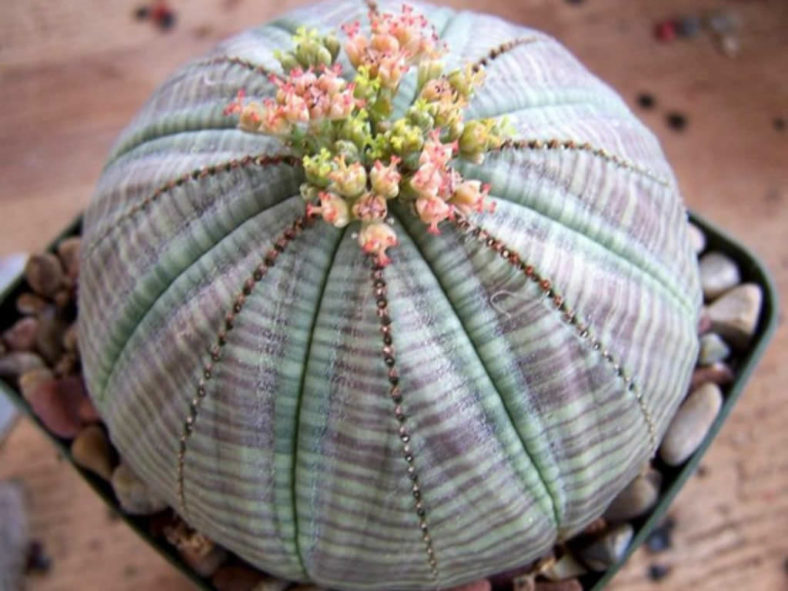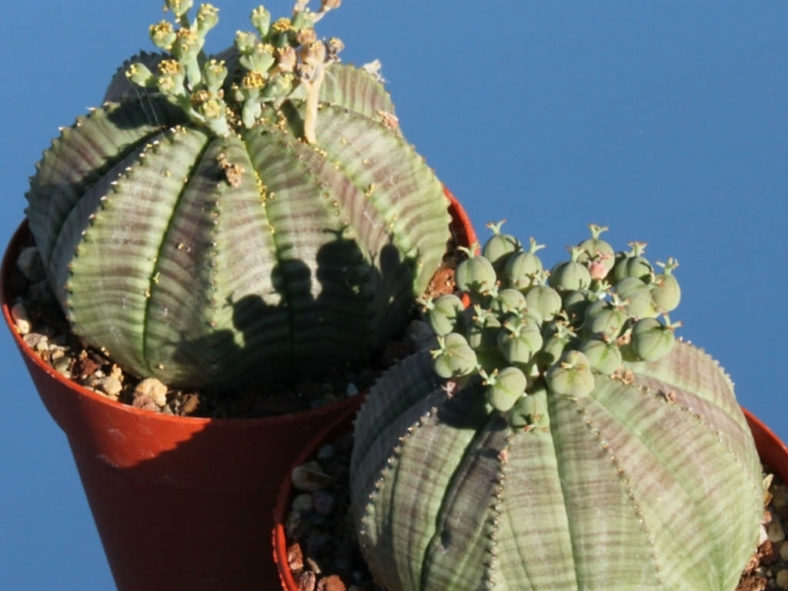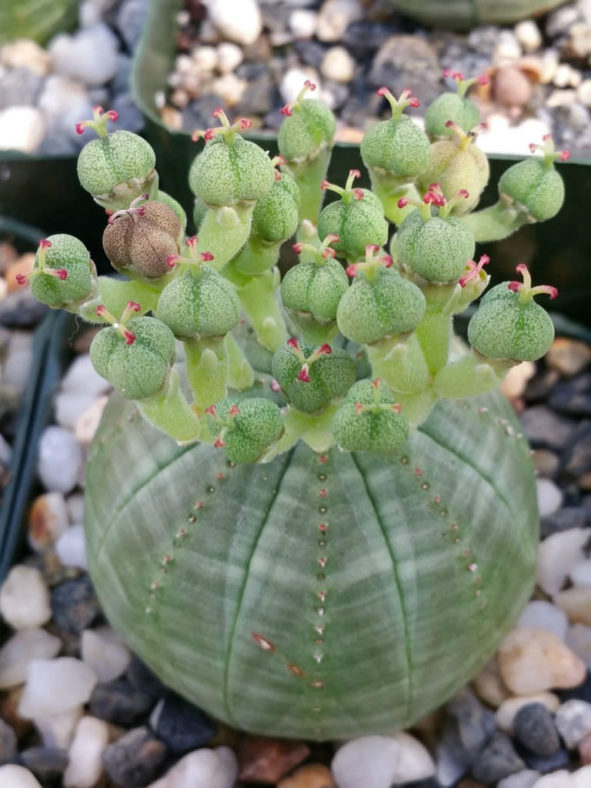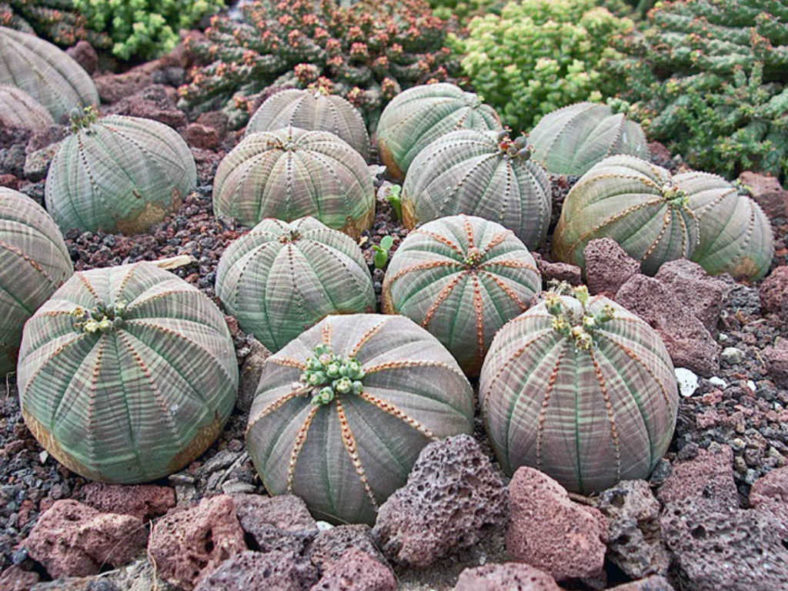Scientific Name
Euphorbia obesa Hook.
Common Name(s)
Basketball, Basketball Plant, Baseball, Baseball Plant, Baseball Cactus, Gingham, Golf Ball, Living Baseball, Sea Urchin
Scientific Classification
Family: Euphorbiaceae
Subfamily: Euphorbioideae
Tribe: Euphorbieae
Subtribe: Euphorbiinae
Genus: Euphorbia
Etymology
The specific epithet "obesa" (pronounced "oh-BEE-suh") means "fat, stout, plump" and refers to the fleshy, rounded stem of this species.
Origin
Euphorbia obesa is native to South Africa. It primarily occurs in the Great Karoo, located south of Graaff-Reinet in the Eastern Cape province.
Description
Euphorbia obesa is a small succulent with a ball-shaped, usually solitary stem that becomes cylindrical with age. The stem is grey-green and marked with horizontal red-brown or purple bands. It almost always has eight slightly raised ribs and can grow up to 8 inches (30 cm) tall and 4 inches (10 cm) in diameter. The tiny leaves fall off very soon after appearing.
Male and female flowers are born on different plants. They are yellow and appear in summer on branched stalks at the top of the stem. The fruits are small, 3-angled capsules.

Subspecies and Forms of Euphorbia obesa
- Euphorbia obesa subsp. obesa
- Euphorbia obesa subsp. symmetrica
- Euphorbia obesa f. cristata
How to Grow and Care for Euphorbia obesa
Light: Most Euphorbias are sun-loving plants, but some will tolerate partial shade. Place your indoor Euphorbias on windows with southern or southeastern exposure.
Soil: Euphorbias require well-drained soil. They even thrive in poor, dry soils. Use a commercial mixture formulated for cacti and succulents, or make your own potting mix.
Hardiness: E. obesa can withstand temperatures as low as 30°F to 50°F (-1.1°C to 10°C), USDA hardiness zones 10a to 11b.
Watering: Succulent Euphorbias can survive drought, but that does not mean they need it. From spring to fall, water when the top inch of soil feels dry. Reduce watering in winter. Give them just enough water to prevent wilting.
Fertilizing: Every Euphorbia will benefit from fertilizer. Apply a balanced fertilizer in a 10-10-10 NPK formulation, diluted to 1/4 strength weekly during the growing season.
Repotting: Euphorbias do not require repotting every year. However, when your Euphorbia outgrows its pot, it's time to repot the plant in a larger pot and provide it with fresh potting mix.
Propagation: Generally, E. obesa is grown from seed from a female plant pollinated by a male plant. However, if an insect damages the top of a female plant, it does sprout multiple offsets, which can be removed and propagated.
Learn more at How to Grow and Care for Euphorbia.
Toxicity of Euphorbia obesa
All Euphorbia species produce a toxic, white, milky sap that can irritate the skin and eyes. Therefore, it is best to keep plants out of the reach of children and pets.
Links
- Back to genus Euphorbia
- Succupedia: Browse succulents by Scientific Name, Common Name, Genus, Family, USDA Hardiness Zone, Origin, or cacti by Genus
Photo Gallery
Click on a photo to see a larger version.


